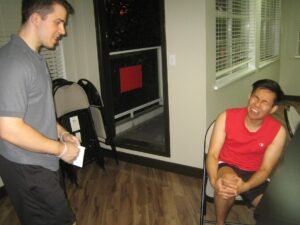The knee joint is considered susceptible to injuries, especially among those who engage in activities that involve frequent jumping, running, start and stop, twisting or changes in direction. The knee cartilage covers the edges of the bones in the knee. The pieces of cartilage situated in between the bones are called meniscus.
Always bear in mind that the cartilage functions as a cushion for the joint as the individual moves and prevents the bones from rubbing against each other. The knee cartilage can also be ripped if the individual endured a direct blow, trauma or forceful twisting of the knee while engaging in certain activities. As one starts to age, the knee cartilage starts to wear down and even tear during daily activities. If the signs and symptoms of a torn knee cartilage are present, a doctor should be consulted for proper treatment of the injury so that it will not become worse.
Knee pain
Once the cartilage is torn due to a direct blow to the knee or abrupt twisting movements, there might be a popping sound in the knee joint. A torn knee cartilage typically generates pain in the interior or exterior part of the knee, not in the patella area.
There is also piercing pain and a feeling that the knee is weak and could not support the body. The knee joint might also lock or catch when the individual moves. If the tear is not severe enough, he/she can still continue with activities or walk as usual.
Swelling

A torn knee cartilage can also cause the area to swell. This can occur right after an injury which is usually within 1-2 hours or it can take up to 1-2 days to manifest. The knee can also become rigid and the individual finds it hard to bend or straighten the knee. If the appropriate measures to manage the injury are not carried out, the swelling and stiffness will eventually worsen over time. In case the tear is minimal, it can heal on its own within a few weeks. In most cases, surgical intervention is required.
Locking joint
Once the knee ligament is severely torn, the knee might momentarily lock in a certain position. The pieces of cartilage can also break away and lodge in the joint, thus limiting movement.
In case the injury is not treated correct and early, the symptoms will recur every time he/she is active. Over time, the individual will end up with constant symptoms even while engaging in daily activities. As the range of motion in the affected knee becomes worse, the neighboring muscles might become weak and tight. This results to additional pain and rigidity. In some cases, the knee can stay locked for a number of days at a time.
